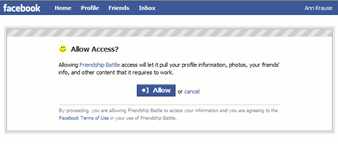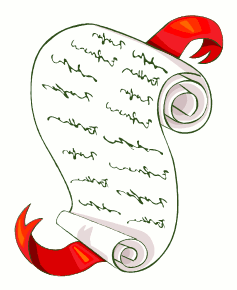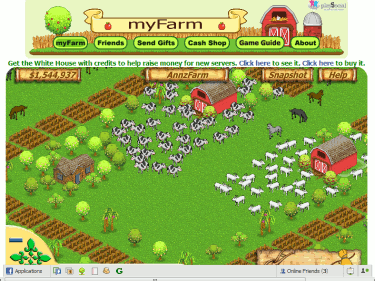Many of us muddle through our finances–we go to work, get paid, buy groceries and other things and we pay our bills. If there’s anything left over, it often goes toward something frivolous or maybe we might pay off a little of our debt with it. Most of the time we don’t stop and think about where we’re at, where we’d like to be, or how to get there financially. Those of us that make an attempt at a financial goal like being debt-free often tackle it without a clear plan. That’s like going on a roadtrip without a map (or GPS unit)–you’re likely to get lost somewhere along the way.
 Personally, I want to be completely debt-free. Last year we moved out of our spendy home in the country into a more affordable one in the outskirts of the city, paid off our car loans and my husband’s student loan, and we had enough “extra” to make life in our new home here pretty comfortable. The only debt we’ve got left to tackle now is the mortgage, and I’ve been hacking away at that by making a couple extra payments when we have a little extra left at the end of the month, but without any clear plan or sense of how much progress we’ve made or how much longer we’ll be paying on this house.
Personally, I want to be completely debt-free. Last year we moved out of our spendy home in the country into a more affordable one in the outskirts of the city, paid off our car loans and my husband’s student loan, and we had enough “extra” to make life in our new home here pretty comfortable. The only debt we’ve got left to tackle now is the mortgage, and I’ve been hacking away at that by making a couple extra payments when we have a little extra left at the end of the month, but without any clear plan or sense of how much progress we’ve made or how much longer we’ll be paying on this house.
Then I ran across the Money Merge Account from United First Financial and it intrigued me–people were using this software program to pay off their mortgage in 1/3 to 1/2 the time. I talked to Joanne, the sales lady who’d invited me to one of their presentations, and she said she’d paid off her mortgage in 15 months. I was curious to see this software in action–what is it that makes it so good?
So last week Joanne give me a demo of their software and I have to say say, as a usability practitioner, I’m impressed. From what I’d read about it, the software actually calculates the time value of money and determines the right time to put extra money into the mortgage. The calculations are quite complex, but they’ve hidden all that complexity behind the scenes and made it so simple to see where you’re at, how long it will take you, and how to get there.
Like a speedometer in your car, the measures of where you’re at, how soon you’re going to get there and how much it’s going to cost you are shown in three windows right at the top:
- Payoff date
- Years to payoff
- Interest remaining
 The way it works is you feed your monthly budget and income sources into the software. The Money Merge Account software then shows you a rolling 90-day action plan. As you go through and implement that plan (adding or subtracting any deviations along the way), the actual income and expenditures show up in the Money Merge Account tab and the mortgage-ometers change appropriately.
The way it works is you feed your monthly budget and income sources into the software. The Money Merge Account software then shows you a rolling 90-day action plan. As you go through and implement that plan (adding or subtracting any deviations along the way), the actual income and expenditures show up in the Money Merge Account tab and the mortgage-ometers change appropriately.
If you have an expense coming up that doesn’t fit in your monthly budget, you simply enter that into the plan. There’s a handy button there too–you can click the “Best time to buy” button and the software will actually calculate the best date within this window, financially speaking, for you to make that purchase. You can override that best time if you need that item sooner.
Another tool I thought was great is the “True cost” switch. If you turn this switch on, you’ll see what any extra expenditure (in terms of extra interest you have to pay on your mortgage) will REALLY cost you. Joanne tells me some people don’t want to know that, but for me, I’d love to see how any extra purchase is going to affect the goal.
The only problem is I wasn’t the one using the software in the demo. Joanne stepped through it all–perhaps it won’t be as easy when I am the driver, but it appears very usable. The buttons are big and clearly labelled, with icons to help users understand what each button does. The bulk of the action happens in 3 main tabs:
- Action Plan: that’s pretty self-explanatory. It’s the listing of what you expect your income and expenses are going to be.
- Money Merge Account: this tab isn’t named very intuitively, but once you understand what it is, it’s fairly easy. This is the tab that shows the actions you’ve completed (your expenditures and paychecks).
- Cashflow: this is the tab you use to enter in changes to your cashflow. This is where you put in those extra expenditures (or windfalls, such as a tax return).
The software costs $3,500.00–some people might think that’s a lot, but considering what you’ll save in mortgage interest, it’s really a good deal. Joanne tells me with the budget I gave her (a conservative estimate), we can pay off our mortgage in 4.25 years and save about $37,000 in interest.
What I’m really excited about is that mortgage-ometer. It seems to me that if we keep our goals visually in front of us, we can’t help but win. If only they’d put them (along with any pending action alerts) in a gadget for my iGoogle homepage or my Windows Sidebar. There’s an idea for you, United First Financial!
Oh, another couple suggestions I have for United First Financial. On your web site:
- Lose the cheesy music on the homepage. It is annoying!
- Include a video demo of the software somewhere on the site. You’ve got usable software; don’t be afraid to show it! You could save your salespeople a lot of time, as well.
- Consider offering a signup for a free trial period. The trial doesn’t have to be very long–perhaps 15 days–just long enough for someone to see if the software would really help them.
I haven’t purchased the software yet, but have already sent Joanne our budget. My husband thinks it’s a good idea, so long as I put some tile floors in our spend plan sometime this year.
Would you like to hear progress reports from our mortgage-ometers?
 I saw this paper from Dr. Eric Schaffer of Human Factors International entitled “UX Strategy: Let’s Stop Building Usable Wrong Things” and it got me thinking … so often we rush to start a new project and build something wonderful, but did we take a moment to stop and think before we rushed into development? Are we building the right thing? How will this new widget make the target users’ lives better? Will they even use it?
I saw this paper from Dr. Eric Schaffer of Human Factors International entitled “UX Strategy: Let’s Stop Building Usable Wrong Things” and it got me thinking … so often we rush to start a new project and build something wonderful, but did we take a moment to stop and think before we rushed into development? Are we building the right thing? How will this new widget make the target users’ lives better? Will they even use it? I dragged myself out of bed early this morning and called the Y right away. They took my name and number and promised to have Kathy call me as soon as she got in. I wondered whether to even bother waking my baby girl. I dragged my feet, but finally decided I’d better wake her up, just in case. Just a few minutes after she dragged herself out of bed, they called and confirmed my fears. She wasn’t registered. I saw all the hope and joy drain right out of her sweet little face.
I dragged myself out of bed early this morning and called the Y right away. They took my name and number and promised to have Kathy call me as soon as she got in. I wondered whether to even bother waking my baby girl. I dragged my feet, but finally decided I’d better wake her up, just in case. Just a few minutes after she dragged herself out of bed, they called and confirmed my fears. She wasn’t registered. I saw all the hope and joy drain right out of her sweet little face. Mortgage-ometer report
Mortgage-ometer report Your English teacher probably told you to avoid writing in the passive voice. Use the active voice–it’s more exciting to read. How well do you do at that? Use the Passive Sentences Test to find out. For this test, the lower the score, the better.
Your English teacher probably told you to avoid writing in the passive voice. Use the active voice–it’s more exciting to read. How well do you do at that? Use the Passive Sentences Test to find out. For this test, the lower the score, the better. The way it works is you feed your monthly budget and income sources into the software. The Money Merge Account software then shows you a rolling 90-day action plan. As you go through and implement that plan (adding or subtracting any deviations along the way), the actual income and expenditures show up in the Money Merge Account tab and the mortgage-ometers change appropriately.
The way it works is you feed your monthly budget and income sources into the software. The Money Merge Account software then shows you a rolling 90-day action plan. As you go through and implement that plan (adding or subtracting any deviations along the way), the actual income and expenditures show up in the Money Merge Account tab and the mortgage-ometers change appropriately. Then one of my good friends commented on my post
Then one of my good friends commented on my post  I’m in the midst of prototyping a virtual credit card terminal in
I’m in the midst of prototyping a virtual credit card terminal in 
